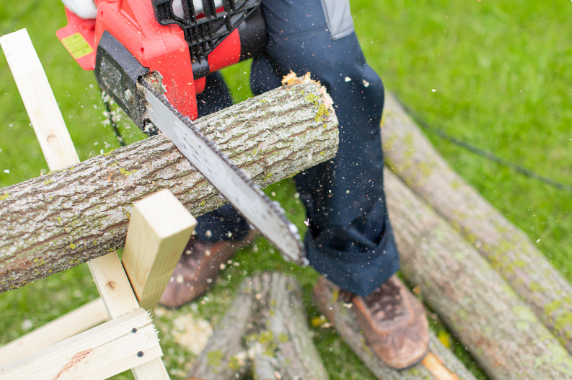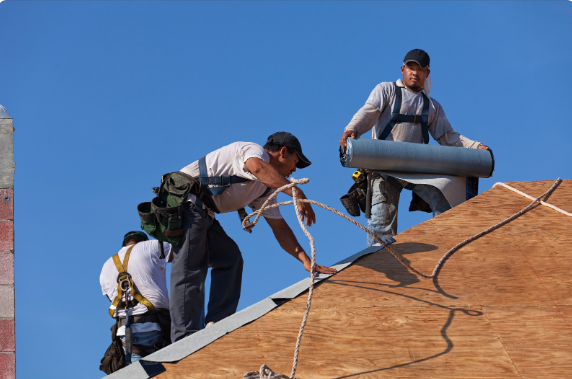
They demand courage and agility. Logging Workers and Fishermen at the top
Many jobs are done from a desk and do not require physical dexterity. But others expose workers to hazards necessary to carry out the task. According to U.S. Bureau of Labor Statistics, Civilian occupations with high risk
that demands a level of courage and resilience few possess are those in which dangerous objects are handled or involve being in unsafe places such as heights or underground.

The ranking:
1. Logging Workers
Logging is the most hazardous occupations globally. Working amidst towering trees and heavy machinery, loggers face many dangers, including falling trees, equipment accidents, and environmental hazards like extreme weather conditions. According to the U.S. Bureau of Labor Statistics, the fatality rate for logging workers is approximately 97.6 deaths per 100,000 workers, making it one of the deadliest professions.
2. Fishermen
Deep-sea fishing exposes workers to unpredictable weather, treacherous waters, and the risk of vessel capsizing. Coupled with long hours and physically demanding tasks, it’s no surprise that fishing ranks among the most perilous occupations worldwide. The Centers for Disease Control and Prevention (CDC) reports that commercial fishing has a fatality rate of 100 deaths per 100,000 workers.
3. Aircraft Pilots and Flight Engineers
Pilots and flight engineers must face hazards such as equipment failure, inclement weather, and mid-air collisions. Moreover, pilots often endure long hours and irregular schedules, leading to fatigue and impaired judgment. According to the International Labour Organization (ILO), the fatality rate for aircraft pilots and flight engineers is approximately 58.4 deaths per 100,000 workers.
4. Roofers
Roofers are vulnerable to falls, slips, and severe injuries without adequate safety measures. Additionally, exposure to extreme temperatures and hazardous materials further compounds the risks associated with this profession. According to the Occupational Safety and Health Administration (OSHA), the fatality rate for roofers is approximately 51.5 deaths per 100,000 workers.
5. Structural Iron and Steel Workers
The construction sector is rife with dangers, especially for structural iron and steel workers. Assigned to assemble tall structures like buildings and bridges, these individuals frequently work at significant elevations, sometimes lacking adequate safeguards against falls. Additionally, they deal with bulky materials and machinery, heightening the risk of mishaps and harm. According to the Bureau of Labor Statistics, structural iron and steel workers face a mortality rate of around 41.5 fatalities per 100,000 workers.

6. Trash and Recycling Collectors
Waste and recycling collectors fulfill a crucial function in upholding public health and cleanliness, yet their occupation is fraught with notable hazards. Navigating hefty trucks amidst bustling traffic, these workers face the constant risk of accidents and collisions. Furthermore, their exposure to perilous substances and sharp items poses threats to their well-being and security. As per the National Institute for Occupational Safety and Health (NIOSH), the mortality rate among garbage and recycling collectors stands at roughly 34.9 fatalities per 100,000 workers.
7. Miners
Venturing into the depths of the earth’s crust, miners extract precious minerals and resources vital for contemporary living. Nevertheless, their occupation is fraught with danger, confronting them with underground collapses, explosions, and noxious gases. Prolonged exposure to dust and airborne contaminants can also result in enduring respiratory ailments. According to the Mine Safety and Health Administration (MSHA), miners face a mortality rate of roughly 25.7 deaths per 100,000 workers.
8. Agricultural Workers
Engaging in agricultural work subjects individuals to numerous risks, spanning from accidents involving heavy machinery to exposure to pesticides. Farm laborers frequently undertake physically strenuous duties amidst challenging environmental circumstances, amplifying the chances of harm and sickness. Additionally, their close interaction with sizable animals brings about further dangers, such as trampling incidents and injuries inflicted by animals. As outlined by the Centers for Disease Control and Prevention (CDC), the mortality rate among agricultural workers stands at approximately 23.1 deaths per 100,000 workers.
9. Truck Drivers
The transportation sector is pivotal in facilitating global trade and presents substantial hazards for truck drivers. Those who navigate large vehicles on bustling highways contend with the constant risk of accidents, fatigue, and road perils. Extended periods spent driving can result in sleep deprivation and compromised driving abilities, intensifying the perils inherent in this line of work. According to the Bureau of Labor Statistics, truck drivers face a mortality rate of around 22.1 deaths per 100,000 workers.
10. Electrical Power Line Installers and Repairers
Employment in the field of electricity carries inherent dangers, especially for electrical power line installers and repairers. These professionals ascend utility poles and towers to install and upkeep power lines, putting themselves at risk of high voltage and electrocution. Moreover, unfavorable weather conditions can heighten the probability of accidents and physical harm. According to the Occupational Safety and Health Administration (OSHA), electrical power line installers and repairers experience a mortality rate of roughly 19.5 deaths per 100,000 workers.
